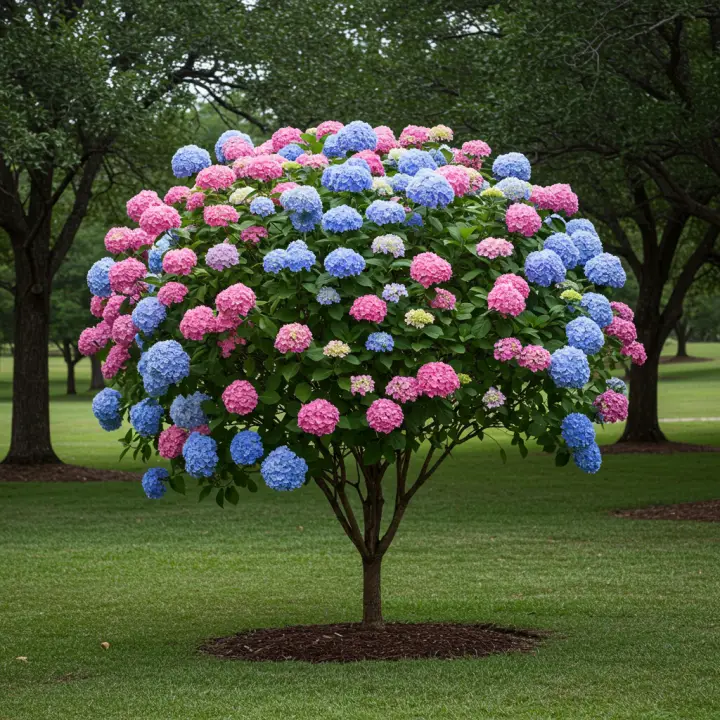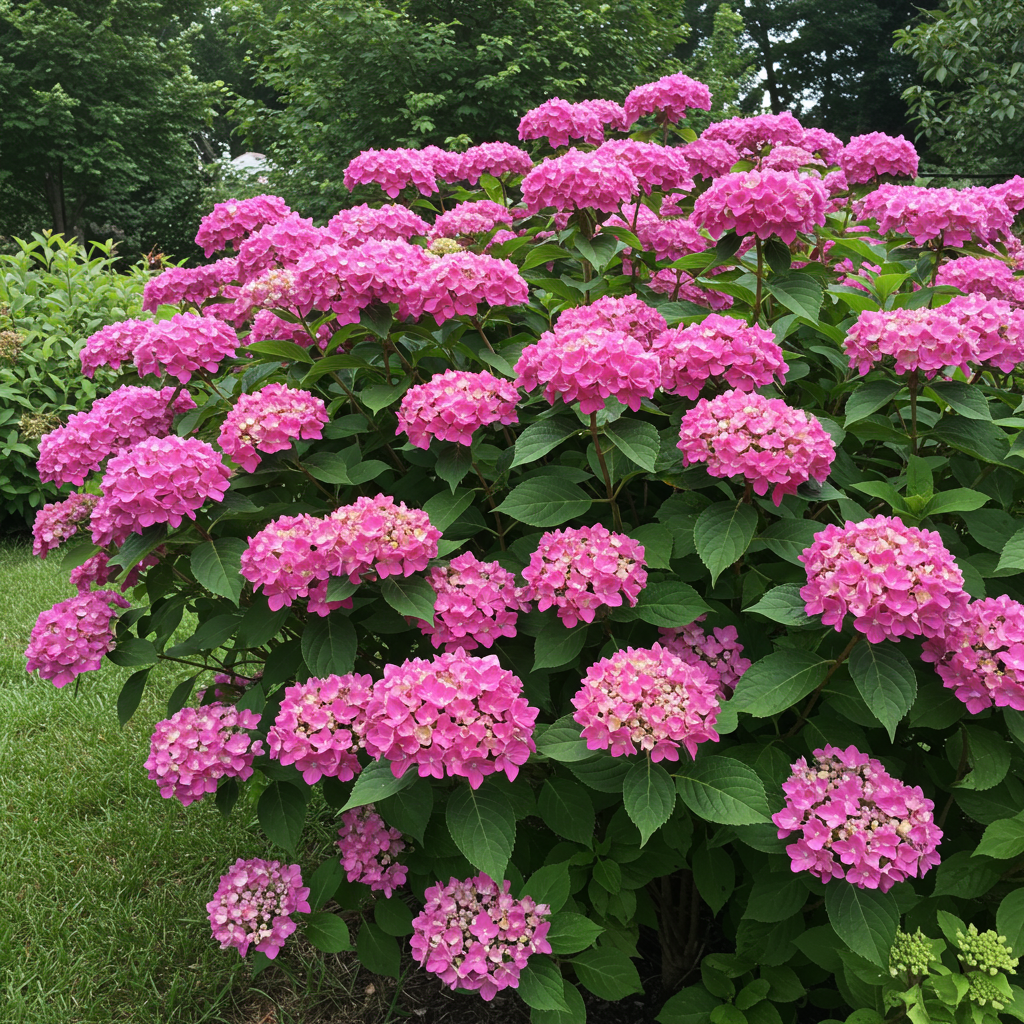The absolute best time to plant a hydrangea tree in Texas is in the fall, from late September through November. This gives the plant the entire cool, damp season to establish a strong, deep root system before facing the stress of the brutal Texas summer heat.
Hydrangea trees, with their magnificent cone-shaped blooms, can be a breathtaking addition to any Texas garden. But success in the Lone Star State hinges on one critical factor: timing. Planting at the right moment sets your hydrangea up for a long, healthy life filled with spectacular flowers. This guide will walk you through everything you need to know, from the ideal season to a step-by-step planting process.
Why Fall is the Prime Planting Season in Texas

While garden centers are bursting with hydrangeas in the spring, seasoned Texas gardeners know that fall is the golden season for planting woody shrubs and trees.
Cooler Temperatures Reduce Stress
Planting a new tree is a stressful event for the plant. The cool air and warm soil of a Texas autumn create the perfect environment. The plant isn’t battling scorching heat and drying winds, so it can focus all its energy on recovering from the transplant and establishing itself in its new home.
Encourages Strong Root Development
During the fall and winter, the plant’s top growth slows down. Instead of pushing out leaves and flowers, its energy is directed below ground. This allows your hydrangea tree to develop a robust and deep root system, which is the single most important factor for surviving and thriving during the intense heat and potential drought of a Texas summer.
Prepares the Tree for Summer Survival
A hydrangea planted in the fall has a significant head start. By the time summer arrives, its roots are well-established and can efficiently draw water from the soil. This makes it far more resilient and less demanding of constant watering compared to a spring-planted counterpart.
Can You Plant a Hydrangea Tree in the Spring?
Yes, you can plant a hydrangea tree in the spring in Texas, but it comes with challenges. If you choose to plant in the spring, aim for as early as possible—ideally in March or early April, after the last threat of a hard frost has passed.
The main disadvantage is that the tree must simultaneously grow new leaves, develop flowers, and establish a root system just as temperatures begin to climb. This can be incredibly stressful for the plant and will require you to be much more vigilant with watering throughout its first summer.
Choosing the Right Hydrangea Tree for Texas
Success isn’t just about when you plant, but what you plant. Not all hydrangeas are created equal, especially in our climate.
Focus on Panicle Hydrangeas (Hydrangea paniculata)
Forget the classic blue mophead hydrangeas you see in cooler climates; they struggle mightily in Texas. The undisputed champions for our state are the Panicle Hydrangeas. These are often sold as “hydrangea trees” because they can be pruned into a single-trunk tree form.
Why Panicle Hydrangeas Excel in Texas:
- Heat Tolerant: They can handle the Texas heat far better than other varieties.
- Sun Tolerant: They can take more sun, ideally morning sun with afternoon shade.
- Drought Resistant: Once established, they are more resilient to dry spells.
- Reliable Bloomers: They bloom on new wood, so you don’t have to worry about a late freeze damaging the flower buds.
Top-Rated Varieties for Texas Gardens
- ‘Limelight’: A classic and beloved variety with large, cone-shaped blooms that start lime green, turn creamy white, and age to shades of pink and burgundy.
- ‘Little Lime’: A dwarf version of ‘Limelight’, perfect for smaller spaces.
- ‘Vanilla Strawberry’: Famous for its blooms that open white and gradually turn a deep strawberry-red from the bottom up.
- ‘PeeGee’ (Grandiflora): An old-fashioned, hardy variety known for its massive white flower panicles.
How to Plant Your Hydrangea Tree: A Step-by-Step Guide
Proper planting technique is just as important as timing. Follow these steps for success.
- Select the Perfect Spot: Choose a location that receives at least 4-6 hours of morning sun and is protected from the harsh, direct afternoon sun. Good drainage is essential.
- Prepare the Soil: Texas soil is often heavy clay and alkaline. Hydrangeas prefer rich, well-draining soil. Dig a hole that is twice as wide as the root ball but only as deep. Amend the soil you removed from the hole with a generous amount of compost to improve its texture and fertility.
- Tease the Roots: Gently remove the plant from its container. If the roots are tightly wound in a circle (root-bound), use your fingers or a small tool to gently loosen and tease them apart. This encourages them to grow outward into the new soil.
- Plant at the Right Depth: Place the tree in the center of the hole. The top of the root ball should be level with or slightly above the surrounding ground. Backfill the hole with the amended soil, gently tamping it down to remove air pockets.
- Water Deeply: Water the newly planted tree thoroughly, allowing the water to soak deep into the root zone. This helps settle the soil and provides crucial moisture.
- Apply Mulch: Spread a 2-3 inch layer of organic mulch (like pine bark, hardwood mulch, or pine straw) around the base of the tree, keeping it a few inches away from the trunk itself. Mulch is critical in Texas for retaining soil moisture, regulating soil temperature, and suppressing weeds.
Frequently Asked Questions (FAQs)
Q: How much sun does a hydrangea tree need in Texas?
A: The ideal exposure is morning sun with afternoon shade. The intense afternoon sun in Texas can scorch the leaves and stress the plant. An east-facing location is often perfect.
Q: Can I grow the classic blue or pink mophead hydrangeas in Texas?
A: It is very difficult. Mophead hydrangeas (Hydrangea macrophylla) require consistent moisture, acidic soil (for blue blooms), and protection from the afternoon sun. They are much less forgiving than panicle hydrangeas and are not recommended for most parts of Texas.
Q: How often should I water my new hydrangea tree?
A: For the first few months after planting, check the soil every few days. Water deeply whenever the top 2 inches of soil feel dry. Once established (after the first year), a deep watering once or twice a week during the hottest parts of summer is usually sufficient, depending on rainfall.
Q: Do I need to fertilize my hydrangea tree when I plant it?
A: No, it’s best to wait. Let the tree focus on root establishment during its first season. You can apply a slow-release, balanced fertilizer in its second spring as new growth begins to emerge.
Conclusion: Set Your Garden Up for Success
Planting a hydrangea tree in Texas is a rewarding experience that pays off with years of stunning summer blooms. By choosing the right variety—a heat-tolerant panicle hydrangea—and planting it during the optimal fall season, you provide the foundation it needs to not just survive, but truly thrive. Give your tree a strong start by following proper planting techniques, and you’ll be enjoying its beautiful, ever-changing flowers for many seasons to come.

